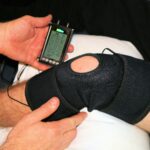Australia’s cities are growing fast, urban populations are swelling and the need for better infrastructure is getting more urgent every year. Congestion on roads, longer commute times and the environmental impact of traffic are big issues for governments and citizens alike. In this context real-time traffic monitoring is becoming a critical tool for urban planners. It offers real-time information on traffic behavior and long term advantages by enabling cities to create improved, safer and more efficient transport systems. In Australia where Sydney, Melbourne and Brisbane cities are facing immense urbanization pressure, real-time traffic monitoring is already influencing the future of city development.
Perhaps the most thrilling aspect of real-time traffic monitoring in Australia is the emergence of traffic monitoring services. These services take advantage of technologies such as GPS data, road sensors, mobile applications and even social media posts to develop an ever-evolving snapshot of traffic patterns. Based on this data authorities are able to make real-time traffic light adjustments, alert commuters to the optimal routes and act quickly to respond to accidents or road blockages. Aside from ensuring traffic flow in real-time, this information is invaluable for longer urban planning projects, allowing planners to know how people travel around a city and where they should be investing in infrastructure.

Enhancing Traffic Flow and Minimizing Congestion
Reducing congestion in Australia’s inner cities is one of the greatest advantages of having real-time traffic monitoring. In Sydney, congestion alone is estimated to cost billions of dollars every year in lost productivity and added pollution. Real-time data enables traffic management centers to calibrate traffic signals to relieve bottlenecks, divert traffic from accidents and optimize peak hour movements. This information can also be passed on to drivers via apps and digital boards so they can plan their trips better and skip congested sections altogether. In the long term, the data collected helps planners to detect recurring congestion points where infrastructure needs to be upgraded or alternative modes of transport need to be provided.
Supporting Public Transport Systems
Real-time traffic monitoring also serves the growing reliance on public transport in Australia. Trams, trains and buses use regular traffic flows to maintain timetables but unforeseen holdups can affect the entire network. Real-time monitoring allows public transport authorities to receive instant alerts when roads become blocked or clogged and adjust routes or schedules accordingly. Then actual-time traffic information in commuter applications assists travelers to better plan their trip and mass transit becomes more appealing than cars. In Melbourne and Brisbane type cities, where environmentally-friendly urban transport is one of the prime policy priorities, traffic monitoring is developing into a key element in maintaining mass transit dependable and attractive.
Better Emergency Response and Road Safety
Road safety is top of mind across Australia and real time traffic monitoring is key to faster emergency response times and fewer accidents. When a crash happens every second counts to get emergency services to the scene. Real time data can alert authorities to incidents, pinpoint their location and the fastest route for responders. Plus monitoring traffic patterns can identify areas prone to accidents so you can target safety interventions like better signage, speed limits or road redesigns. In the long term reducing the number and severity of accidents saves lives and reduces the economic burden on the health and insurance systems.

Smarter Urban Development
Urban planning is no longer just about building new roads and bridges it’s about creating smart connected environments that serve the needs of growing populations. Real time traffic monitoring gives planners the granular data to understand not just how much traffic a road carries but who is using it, when and why. In Australian cities this level of insight is critical to designing new developments that integrate housing, business and recreation spaces to minimize unnecessary travel and promote sustainable living. For example planners can identify underutilized transport corridors perfect for development or areas where new public transport hubs could ease commuter pressures. This data driven approach creates cities that are more liveable, resilient and sustainable for future generations.
Environmental Sustainability
Reducing traffic congestion has a direct impact on reducing vehicle emissions an essential part of Australia’s broader climate change strategy. Idling cars stuck in traffic produce more greenhouse gases than cars in steady flow. By using real time monitoring to smooth traffic flow and encourage alternative routes or modes of transport cities can make meaningful reductions in urban emissions. Plus real time data supports the planning and promotion of cycling and pedestrian infrastructure so more environmentally friendly transport options. As Australia chases ambitious climate targets integrating traffic monitoring into urban planning will be a key strategy to achieving those goals.












